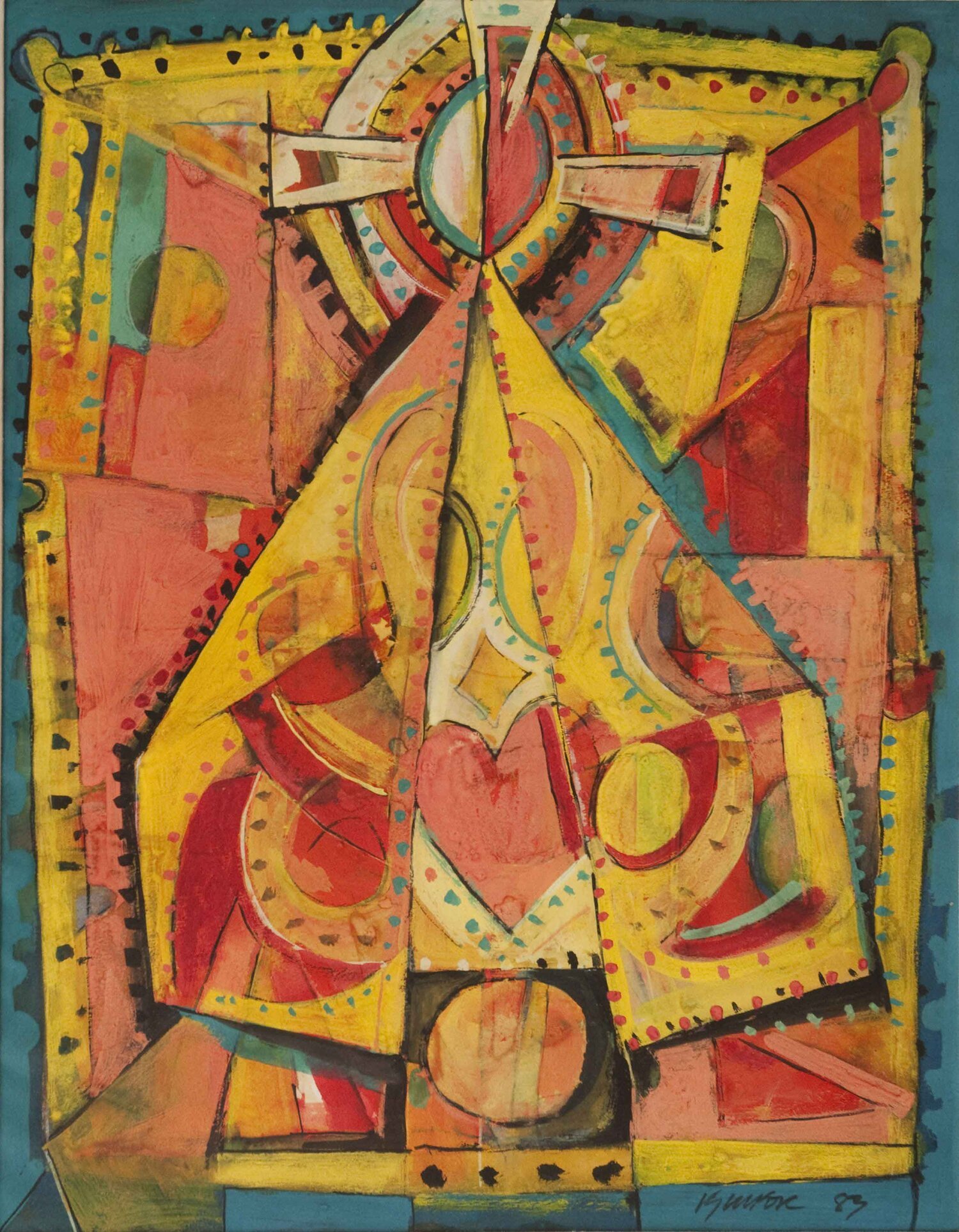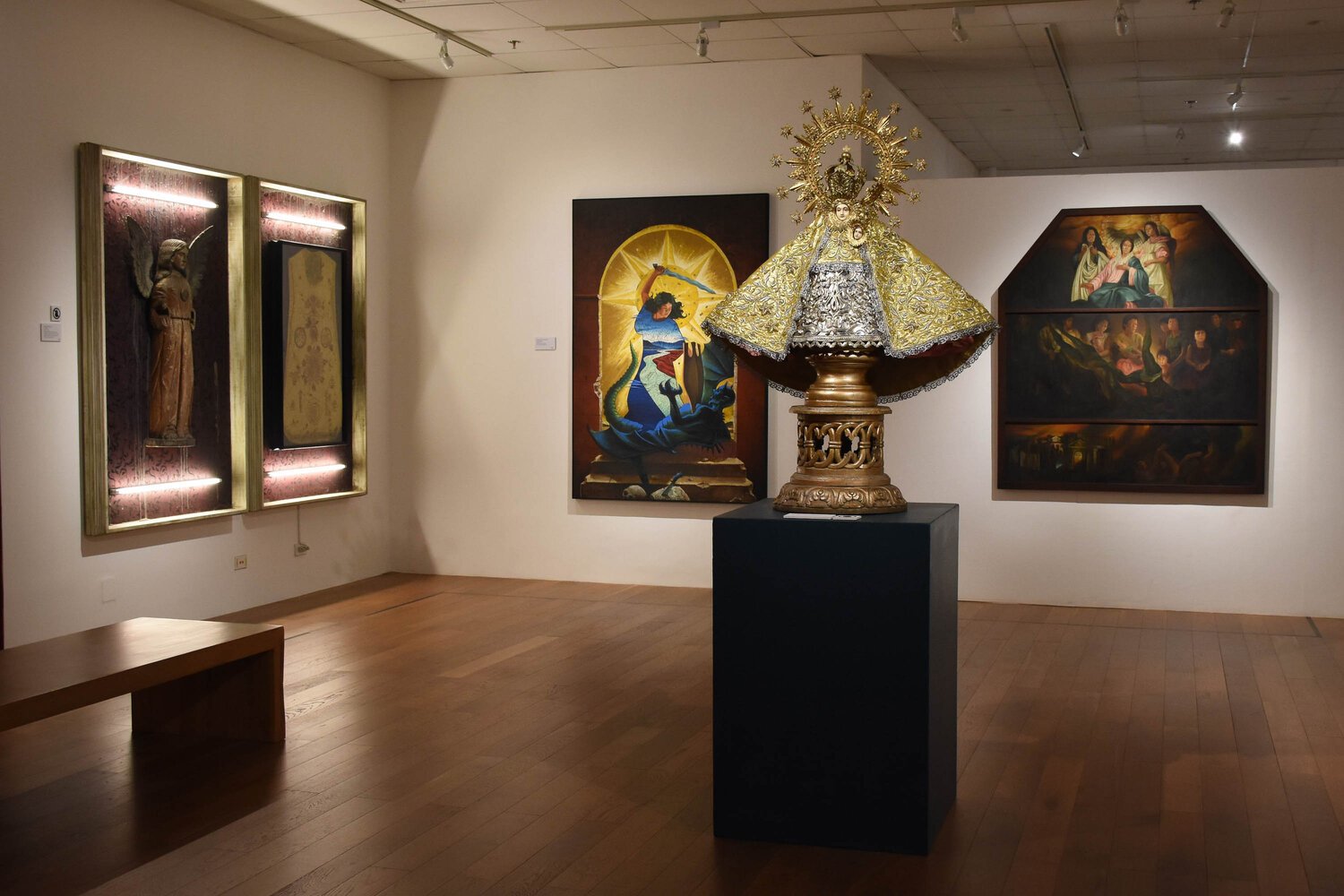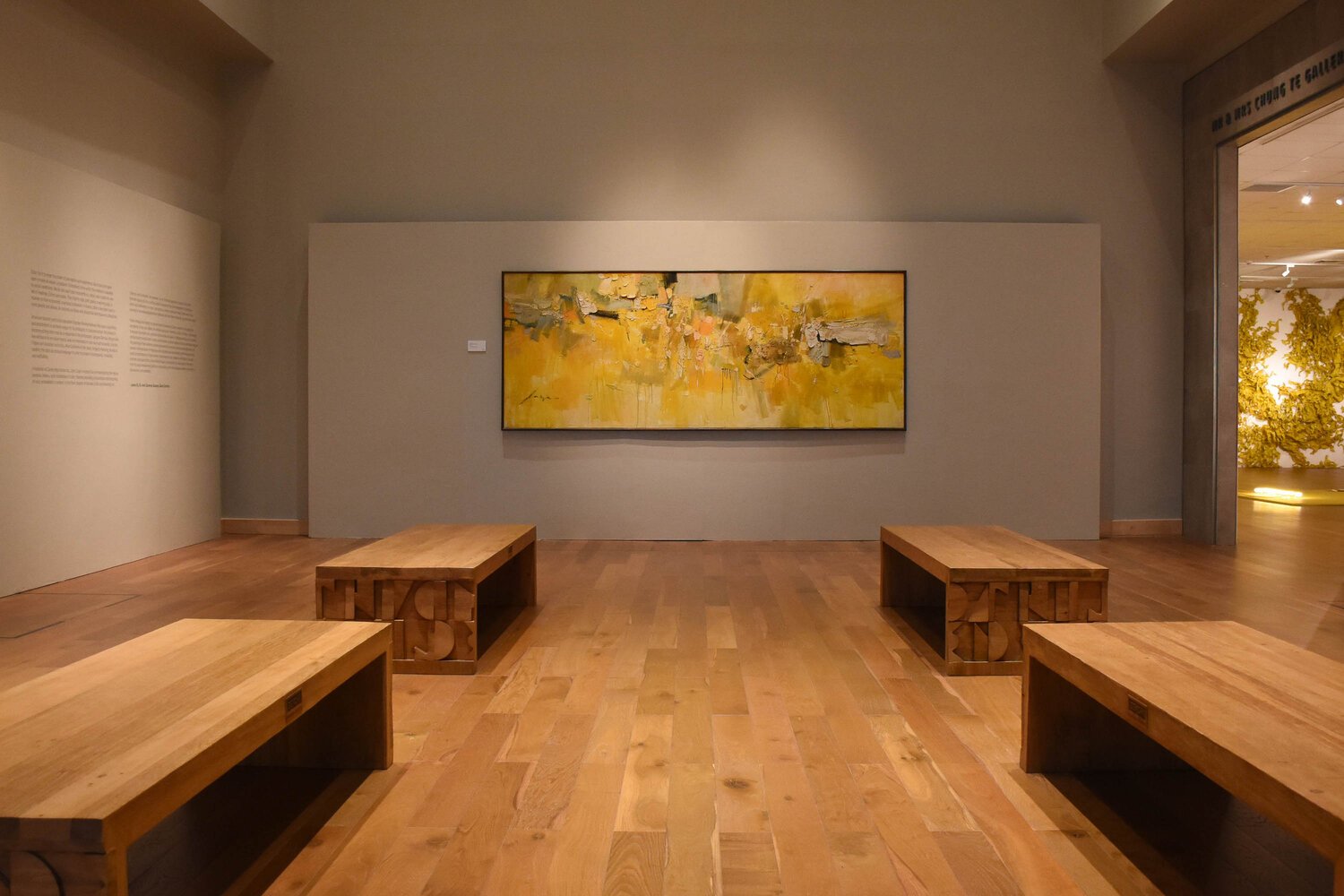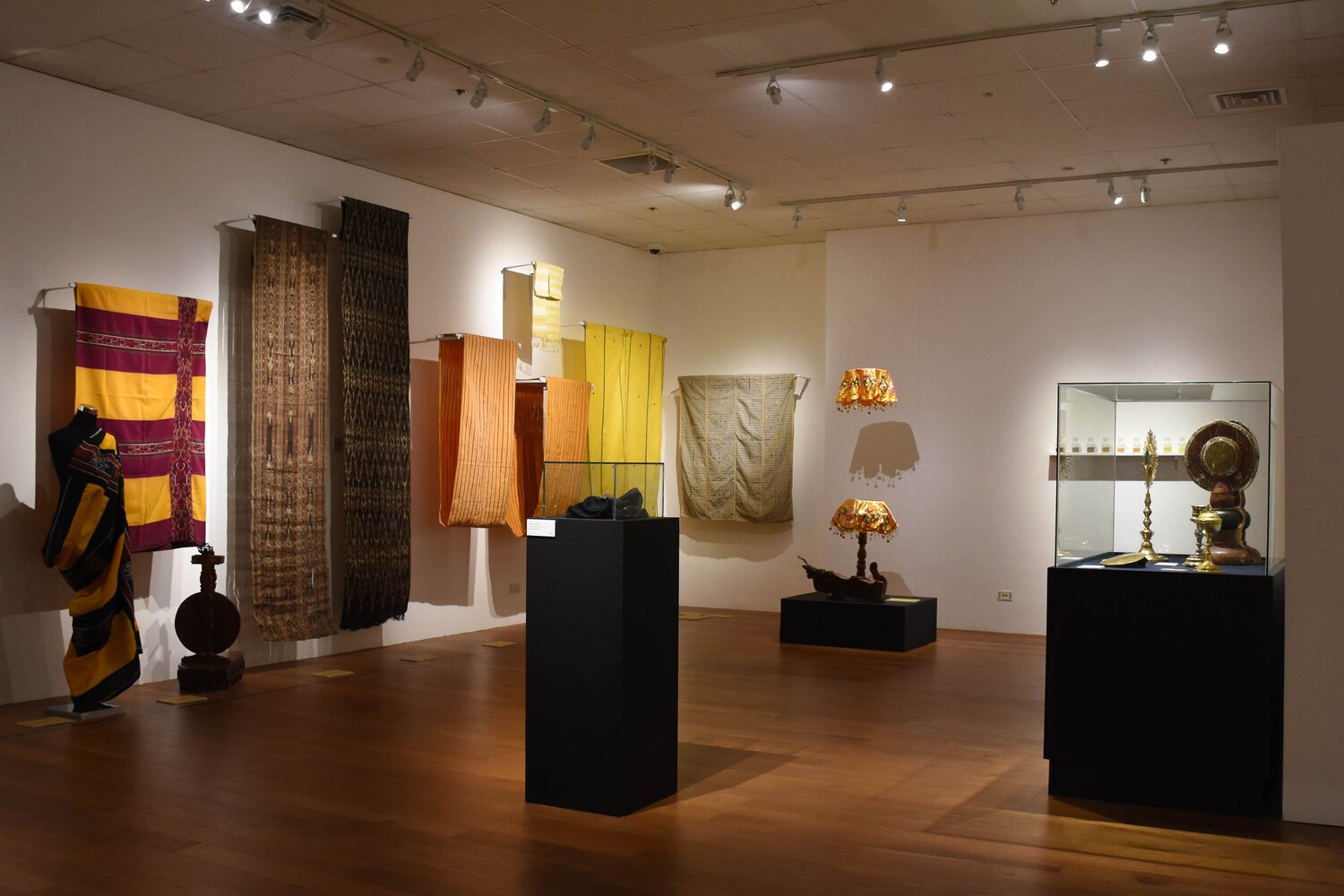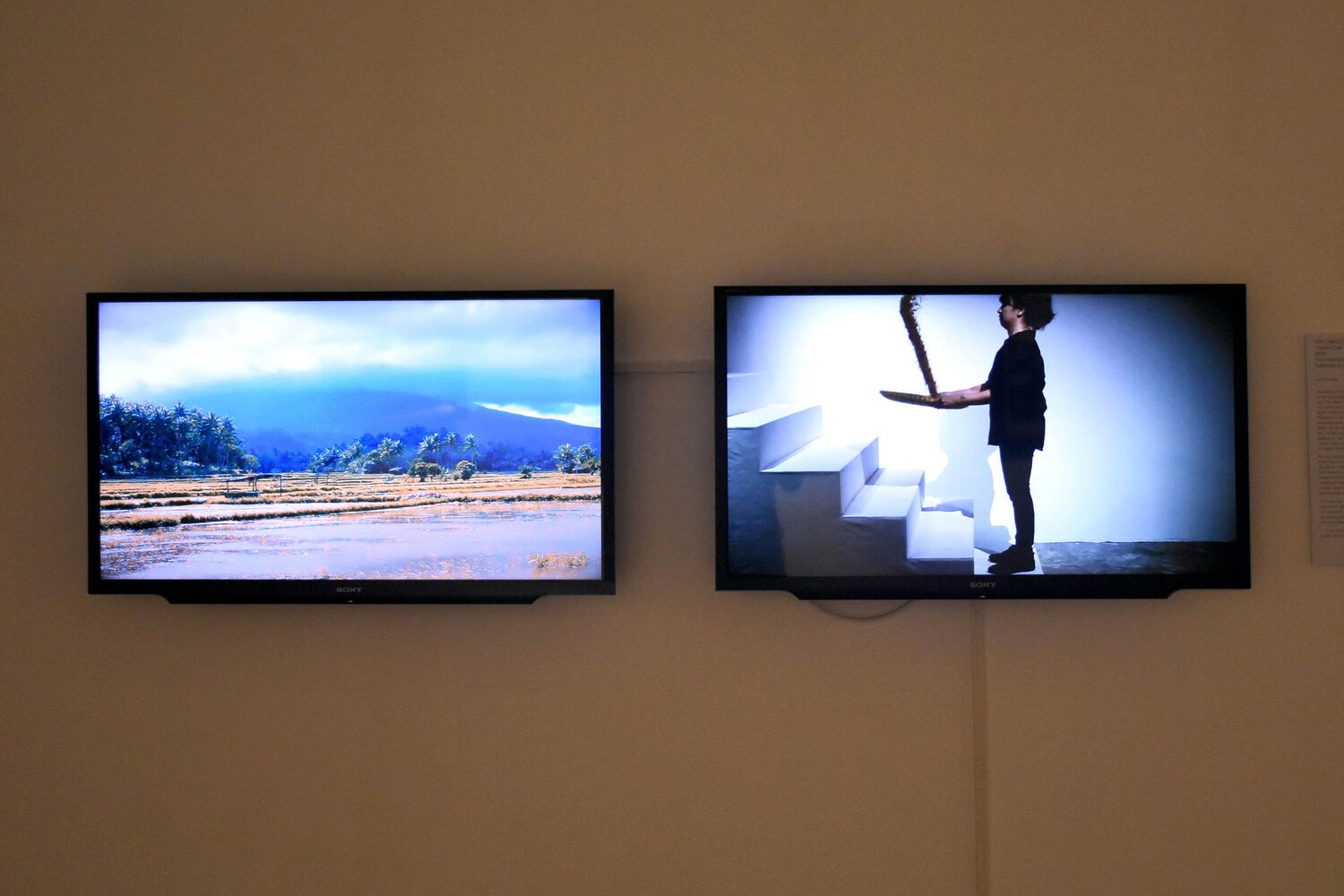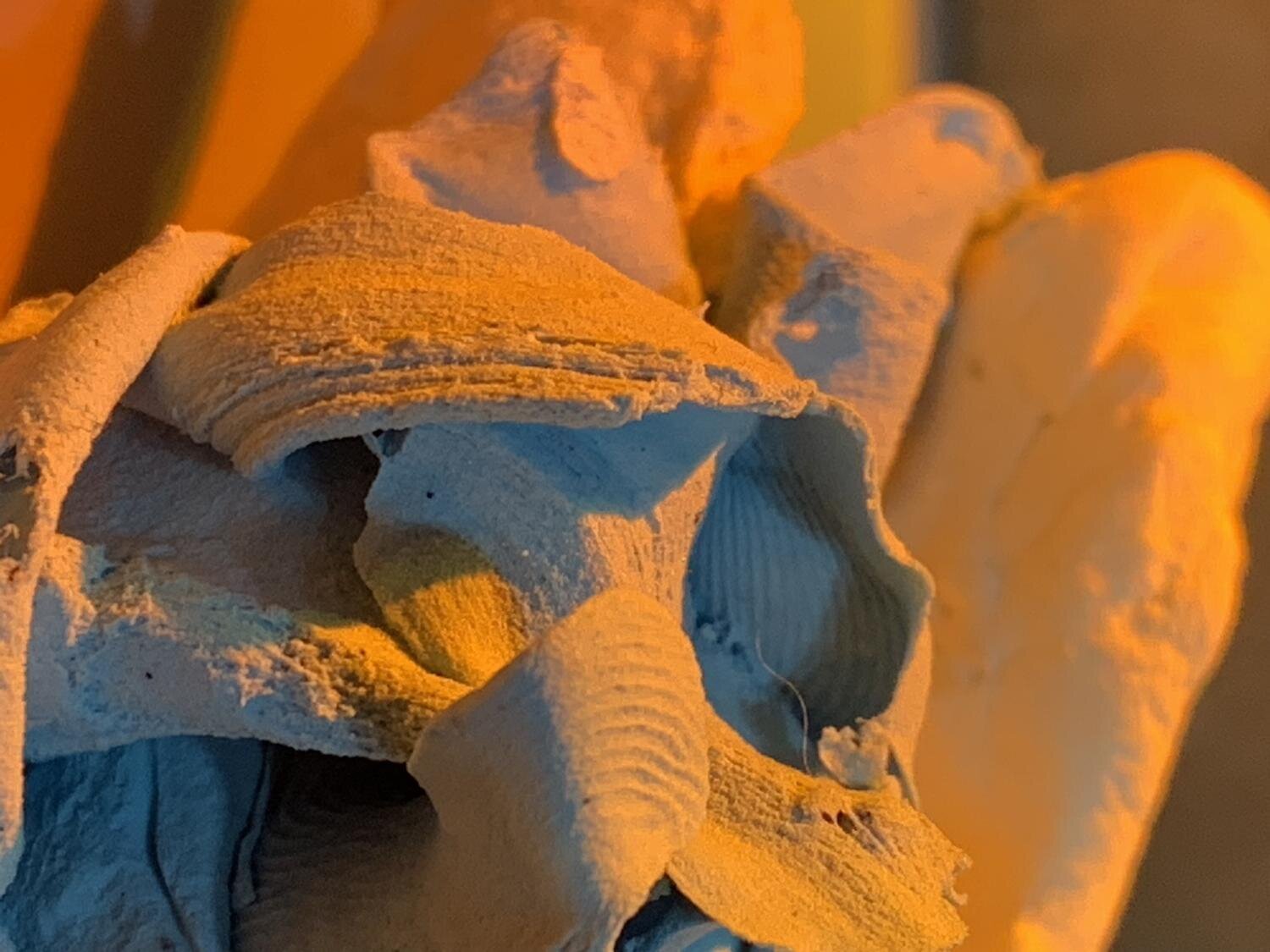'Yellow Ambiguities' at Ateneo Art Gallery
Colouring the lens of Filipino art history
By Ian Tee
Ang Kiukok, 'Madonna (Santo Rosario)', 1983, tempera on paper. Collection of AAG. Image courtesy of AAG.
Established in 1960 by Fernando Zóbel, the Ateneo Art Gallery (AAG) is widely recognised as the first museum of Philippine modern art. Its collection began with Zóbel's donation of over 200 artworks by key Filipino post-war artists as well as prints by European masters such as Rembrandt, Goya and Picasso. AAG is housed at the Arts Wing in Areté, Ateneo de Manila University, since October 2017 and this new three-storey compound allowed the museum to feature more of its permanent collection. The latest thematic exhibition zooms in on the colour yellow as a way of understanding the trajectory of art history in the Philippines.
Titled 'Yellow Ambiguities', the show puts the modern art collection of AAG in dialogue with pre-colonial artefacts, Hispanic colonial religious objects, naturally-dyed woven fabrics and experimental works by contemporary artists. Guest curators Fr. Jason Dy and Carlomar Daoana are interested in the prevalent use of yellow as a hue and as an element with varying socio-political and cultural associations. The exhibition is presented in five sections, namely: 'Properties and Surfaces', 'Halos and Illuminations', 'Illness and Struggle', 'Forms and Ideas', and 'Tropics and Heat'.
'Yellow Ambiguities', 2019, exhibition installation view of 'Halos and Illumination' section. Image courtesy of AAG.
'Yellow Ambiguities' follows in the footsteps of American art historian John Stephen Gage, whose book 'Colour and Meaning: Art, Science and Symbolism' took a chromatic approach to the visual analysis of western art. Fr. Jason shares that the exhibition title is informed by British writer Victoria Finlay's assessment of the colour yellow as one which "gives some of the most mixed messages of all". He cites the colour's contradictory associations; its luminescence is used to express light and marks of divinity like the halo, but it can also signify deception in Renaissance paintings. For instance, Judas is usually identified with a yellow robe.
In addition to being a Jesuit priest, Fr. Jason is also an art professor at Ateneo university and a conceptual artist. Both areas of knowledge meet in the section 'Halos and Illuminations', which traces how expressions of the divine in religious culture and iconography during the Hispanic colonial period are appropriated by modern and contemporary artists. Displayed together with religious artefacts, Ang's 'Madonna (Santa Rosario)' is a modern interpretation of Marian art in the artist's Cubist style. The painting is devoid of the violence usually associated with Ang's work, and instead conveys the Virgin Mary's motherly love with a figure whose cape opens to reveal a warm pink heart.
Jose Joya, 'Granadean Arabesque', 1958, oil on canvas. Installation view in 'Properties and Surfaces' section. Collection of AAG. Image courtesy of AAG.
'Yellow Ambiguities', 2019, exhibition installation view of 'Properties and Surfaces' section. Image courtesy of AAG.
Taking a step back from symbolic meaning to look at material qualities, 'Properties and Surfaces' explores the pigments and dyes that lend objects and artworks their bright hues. Prominently positioned in the gallery, Jose Joya's 'Granadean Arabesque' is a masterful study of texture and composition by the abstract expressionist painter. Its luscious surface is considered alongside gold funerary masks and indigenous woven textiles. "It was an interesting search," says Fr. Jason. "While Carlomar and I do not have personal collections of textiles, we have friends who engaged with various weaving communities and collected important pieces which are included in the show."
The curator details how his research brought him to visit the atelier of Itneg weaver Norma Agaid and the Aga Khan Museum in Marawi, a city located in the southern region of the Philippines. In both instances, the craft is further developed by the younger generation with contemporary design and the use of natural dyes like ginger and lemongrass. Beyond the diverse visual interest these pieces bring to the show, he adds that "it's edifying to see the Maranao tradition continuing through their textile and weaving."
Galo Ocampo, 'River of Life', 1954, oil on plywood. Collection of AAG. Image courtesy of AAG.
In the Philippines, yellow is a colour of political power, and of hope as well as its failures. The section 'Illness and Struggles' draws from AAG's comprehensive collection of works by the social realists of the 1970s and 1980s. This part of the exhibition grounds the show to the country's current socio-political climate, with works addressing working class struggles and issues from the time of martial law under Marcos and after his removal from power. Painted in hues of acidic yellow, green and orange, Galo Ocampo's 'River of Life' is a ghastly image of two flagellating figures in a stream. Their blood flows into a river of wreckage which seem to provide nourishment for the thriving landscape behind. While the painting's title seems life affirming, the picture depicts the inequality and sacrifices at play. Here the colour yellow is not glorious gold but bile, signifying hunger and poverty.
Lyra Garcellano, 'Tropical Loop', 2018, two-channel video installation, 7 minutes. Collection of the artist. Image courtesy of AAG.
Gajah Gallery will similarly shine a spotlight on young artists, including Indonesian artist Erizal As with his latest series “Formless Existence’ currently on view in the gallery’s space in Singapore, as well as Dini Nur Aghnia, whose landscape works are composed of sculpted painted clay discs. More established Indonesian artists the gallery will present are I Made Djirna, Ibrahim, Semsar Siahaan and Yunizar. It will also present new works by young Malaysian artists Kara Inez, Kuat Zhi Hooi and Kayleigh Goh, who works with wood and cement to create contemplative spaces within two-dimensional workUnited by the theme of the landscape, this critique is sustained by Lyra Garcellano's two-channel video installation 'Tropical Loop' (2018). In one video, the artist performs the so-called "dalagang Filipina" walking along rice paddy fields with the mystical Mt. Makilling in the background; in the other, she is seen walking up and down wooden steps while winnowing, separating the grain and chaff. "Garcellano is questioning the idyllic representation of women, the rural countryside and farmers especially in the paintings of Fernando Amorsolo," Fr. Jason explains. Notably, Amorsolo taught Zóbel painting at an early age and his works popularised an exotic image of the Philippines during the American colonial period. Garcellano's installation grapples with evolving Filipino identity and environment, continuing the discourse started by modern artists who had a nationalist consciousness.
Even though the exhibition is not an extensive survey, it is an effective proposition that engages with the AAG's collection and brings cultural artefacts into the conversation. This curatorial decision established a context which allowed the rich connections between visual language and material culture to unfold. Perhaps more importantly, 'Yellow Ambiguities' provides a rewarding perspective of what it might mean to "colour" Filipino art history.
'Yellow Ambiguities' is on view at Ateneo Art Gallery till 5 January 2020.s.

